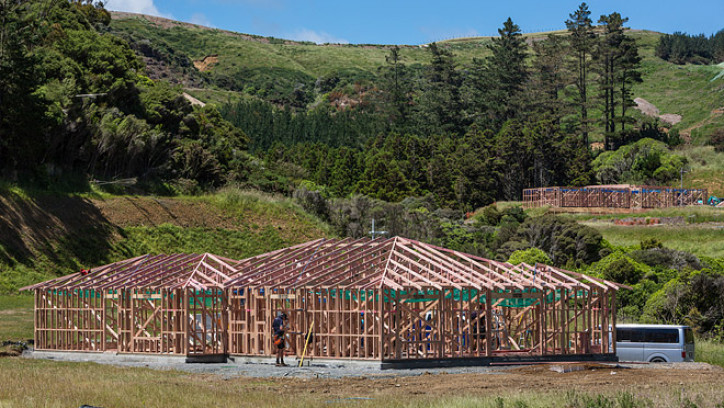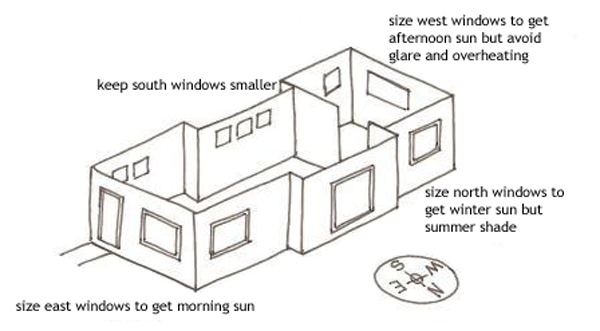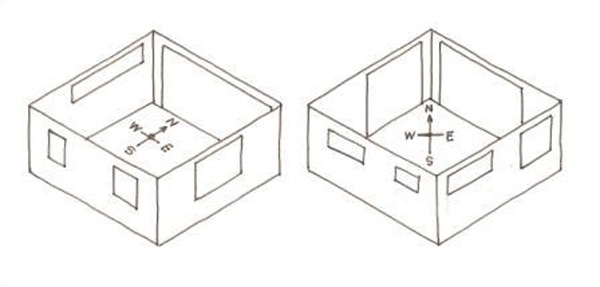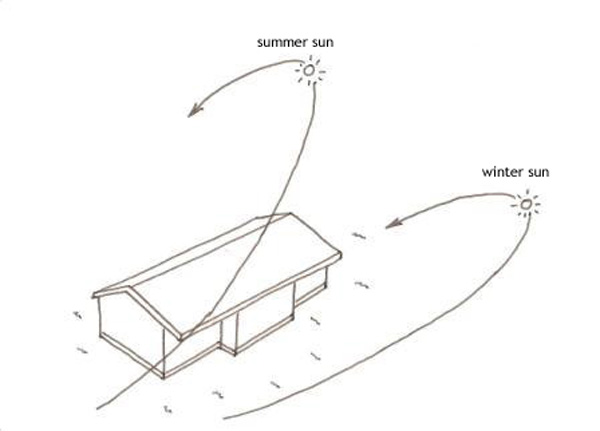House orientation
Last updated: 9 August 2023

If your home is oriented to take advantage of warm sun and cooling breezes, you'll achieve greater comfort at lower cost.
Here comes the sun
In general, ideal orientation means:
- you get the right amount of sun – plenty in winter and in cooler climates
- you're sheltered from strong/cold winds but can take advantage of breezes to cool your home when it is too warm.
When you're designing a home or planning renovations, there'll also be other considerations such as local climate, view, terrain, vegetation, street access and noise. You'll need to balance these against the benefits you can achieve through harnessing the sun's energy for heating and breezes for cooling.
When should you think about orientation?
It's important to consider orientation before you buy a property (including an apartment or townhouse), or start designing a new home or renovation.
It's also worth considering orientation for your existing home, especially if there are small or no windows facing north, or large areas of glazing facing east, west, or south. There may be simple ways to make the most of the orientation – for example, increasing the size of north-facing windows or swapping the use of existing rooms so that the sunniest rooms become your living areas.
Positioning for sun
The exact amounts and proportions of glazing you choose will vary depending on other considerations such as:
- climate
- the level of insulation in your home
- the thermal performance of windows and window frames, particularly in existing houses.
It is also worth considering the type of glazing alongside the placement and number of windows. For example, if you want south-facing windows to capture the view, consider fewer or smaller picture windows, that frame the view.
If you are building new, consider upgrading to windows with a thermal performance that is better than the minimum requirements under the Building Code.
If you are renovating, consider at least double glazing with a high-performing Low E (low emissivity) coating for any window you replace. Low E glass has a virtually invisible coating that lets light into your home, while reflecting heat. It improves double and triple glazing to better insulate your home in winter and to help keep your home cooler in summer.
And remember that frames are just as important as panes. If you are selecting your window frames, consider paying a little extra for thermally broken frames, or frames made from uPVC or timber – these will significantly reduce (or possibly even eliminate) window condensation, so you won't have to wipe down your windows or repaint your window sills as often.
Architectural trends in residential design since the 1950s have led to larger windows, and more of them. Bigger windows let more heat in during summer and let more heat out in winter. You will want to carefully consider the size and placement of windows – bigger isn't always better.
To make the most of the sun for warmth and natural light, your home's main living areas (or any rooms you use a lot) should face north. The main glazing in the house, such as windows and glass doors, should also face north. Anywhere between 20°W – 30°E of true north is fine.
Avoid large west-facing windows that can cause significant overheating in summer. Consider movable external shading, or use glass with a low solar heat gain coefficient on that side of the home.


Even if your home doesn't face true north, windows can be positioned to get north sun.

The sun travels higher in the sky in summer.

A clerestory window will bring north sun into a south-facing home.